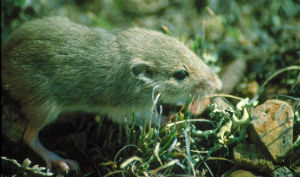
Dr Claudia Scheinbaum has been elected as President of Mexico, a six year term and the first woman. Despite the glitter of the apparent celebration, Mexico is a mess, instance Mexico City where she was Mayor before being elected President. As The Washington Post reported recently, she had won in a landslide under the umbrella of her mentor, the previous President, Andrés Manuel López Obrador. He was a charismatic dud, despite his popularity.
Mexico is under a great deal of stress; despite that, its lower wage scales have attracted relocation of many American companies. For instance, General Motors produces 800,000 vehicles from four factories located in different parts of the country. Nevetheless, the economy remains sluggish.
Nevertheless, the drug cartels have reached the stage of challenging provincial government authority, and in so doing the concept of Mexico being a democracy. The Americans are consumed by the hypocrisy of being a bottomless pit for Mexican-exported cocaine and its increasing consumption, and putting in draconian border restrictions.
Borders – what borders for drugs? Taken as a percentage of users (latest data 2021), in percentage terms the District of Columbia at 3.8 per cent, closely followed by Vermont and New York, are the highest consumers of cocaine. The lowest is Texas at 1.33 percent but still 337,000 people depend on a loosened border to supply their addiction to cocaine from the Mexico cartels.
I have been to Baja California in happier times, when we lunched in Ensenada, close to where the two young Australian surfers were murdered recently. After all, it is now a centre of the drug trade, and long ago where we lunched overlooking the Sea of Cortez, it was a scene where its serenity was expressed by John Steinbeck in his Log. “Beauty occurs everywhere: sunshine and rock, ripple and shadowed wave. Show your joy as thinly as what you call sorrow.” He and Ed Ricketts, the father of marine biology, had gone on an underwater expedition in March 1940, their base a sardine seiner out of Monterey.
No longer seen as in the Steinbeck vision, it’s now the most dangerous area of Mexico less than 150kms south of the US border. This is just one of the problems, Dr Scheinbaum has inherited, a beautiful coast now polluted by criminal militias. Tourism is worth US$ 3.38 bn (8.5% of GDP) to Mexico. Paradoxically, it is increasing. Oh, what a conundrum, a seductive coastline concealing a hostile interior where the populace is locked into a culture of poverty.
So different from Mexico City. I had been surprised when I received in 1991 notification that I had been elected President-elect of the International Society of Quality in Health Care (ISQA). Who by? I had not even nominated, because my experience of the organisation up to that point was that it was on its last legs, with no money and an organisation with an evangelical tinge of wanting to save the World but no concept of budgeting for such a mission.
Anyway, I accepted the Presidential Chalice but did not drink from it. The upshot was I had to open the ninth ISQA Conference in Mexico City in 1992. When I had visited in the previous December, nothing had been done. Everybody seemed to be on holidays. I went ahead and booked the venue on my credit card. My President-elect, Enrique Ruelas was nowhere to be seen. Anyway, the Conference went without a hitch the next year. I met a number of Mexican dignitaries, whose names have been lost in the breezes of faded importance.
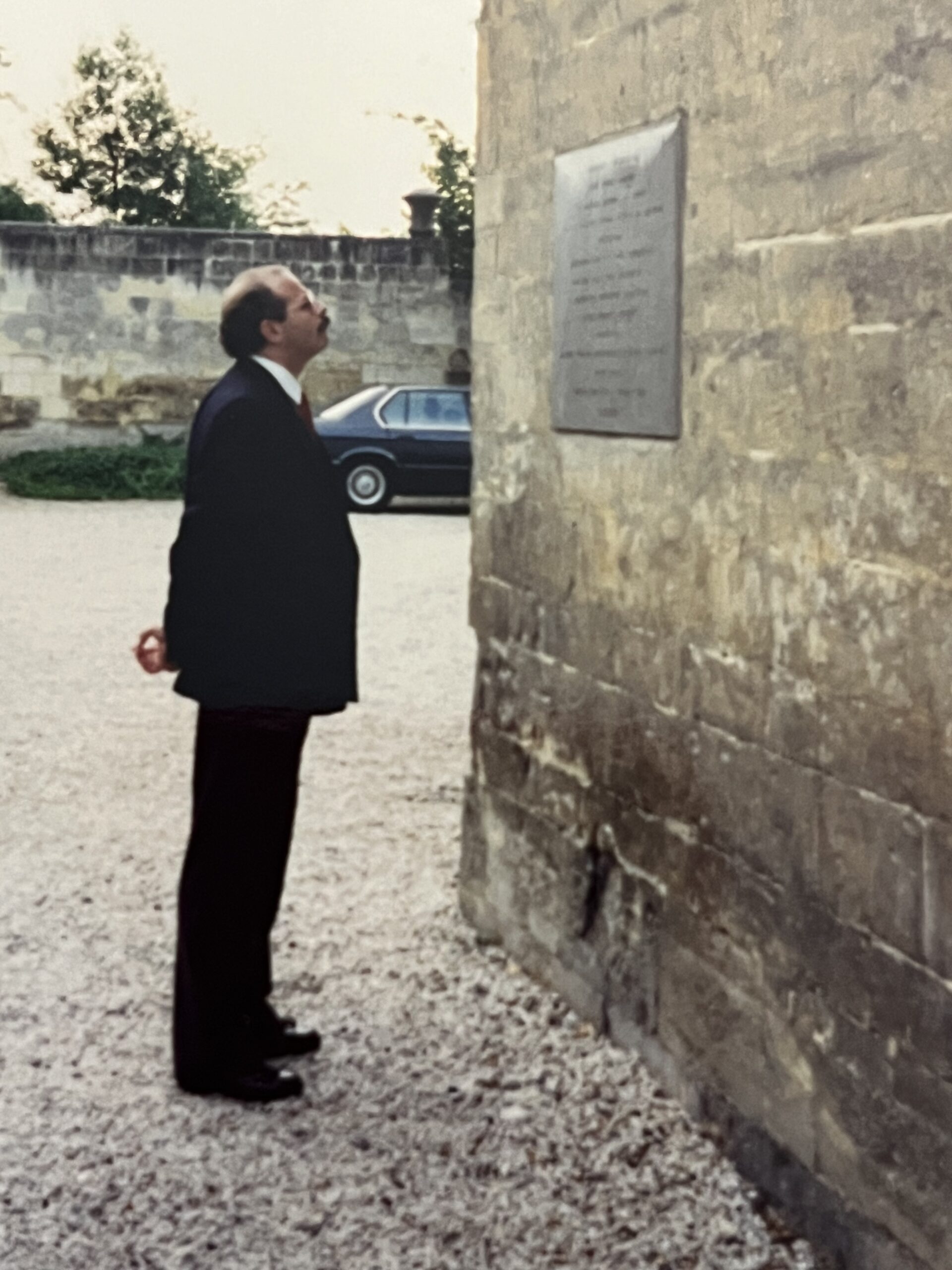
 Enrique turned out thus to be well connected. Nevertheless, being only 30 years he was still inexperienced, but affable enough, spoke English moderately well but struck me as pliable and disliking conflict, which suited me, because it enabled me to spread my influence over four years from a standing start after inheriting the Chalice.
Enrique turned out thus to be well connected. Nevertheless, being only 30 years he was still inexperienced, but affable enough, spoke English moderately well but struck me as pliable and disliking conflict, which suited me, because it enabled me to spread my influence over four years from a standing start after inheriting the Chalice.
Enrique had experienced disaster in a massive proportion, which would have tested anybody’s resilience. In 1985, Enrique was caught in the massive Mexican City earthquake, which demolished his hospital while he was away. Otherwise, he may have been one of the 10,000 people killed on that September day.
Back to 1992, I opened the Conference in Spanish, carefully highlighting the two active volcanoes, Popocatépetl and Iztaccihuatl, to essentially show off my mastery of the language, but in truth unwittingly highlighting the instability of this city of 22.5 million people. These volcanoes are close to Mexico City, and an eruption could create a latter-day Pompeii.
Currently, Mexico City is also subsiding because of overuse of aquifers. Buildings in the centre of the city are sloping and bending, the airport terminal and runways, the aboveground metro and streets are cracking, Repairs are costly. It is projected that the land is going to sink another 100 feet over the next 150 years. Water shortages are running the taps dry, worsened by low rainfall, climate change and poor infrastructure. This situation continues to reinforce reliance on groundwater pumping to meet the city’s water demand. It is a symbol of the competing pressures which Mexico has yet to master.
Dr Scheinbaum, Mexico’s new President-elect, the former Mayor of Mexico City, has pledged to combat the country’s water crisis by cracking down on water-intensive agricultural industries and improving irrigation systems. However, the problems of Mexico are a challenge verging on impossibility.
There is an undercurrent that Dr Sheinbaum will be Obrador’s puppet, more than a tinge of misogyny. For instance, as quoted in the NYT: “She needs him,” said Carlos Heredia, a Mexican political analyst. “She doesn’t have the charisma, she doesn’t have the popularity, she doesn’t have the political stamina of her own, so she needs to borrow that from López Obrador.”
Dr Sheinbaum is a climate scientist having shared in the 2007 Nobel Peace Prize awarded to The Intergovernmental Panel on Climate Change (IPCC), she being a significant contributor. Yet her mentor, Obrador is very close to the fossil fuel industries, but I suppose that is just another conflict that Dr Sheinbaum will have to face. Her responses have not been very encouraging.
Incidentally, my successor, Enrique Ruelas has gone on to have an impressive career as a public health physician, a consummate bureaucrat, racking up a string of accolades. I always knew he would, even though I have not spoken to him for over twenty years when he was still finding his way to the career escalator. Enrique is 71 years and closing on his retirement years, whereas Claudia Scheinbaum is 61 years and on the threshold of her greatest challenge.
An Addendum to My Opening Address
The audience anticipated that after my opening address, which commenced with the salutation “Damas y Caballeros”, I would revert to English, so the Spanish speakers immediately went for their headphones for the translation from the expected English. To my chagrin, as some of my erstwhile friends kept saying, despite my ostensibly speaking in Spanish, the Mexicans kept their headphones on. A bit harsh. I thought my pronunciation passable, struggling with two words only. But the Mexicans appreciated that I honoured them by not speaking in the language of the Gringo.
The Suwalki Corridor
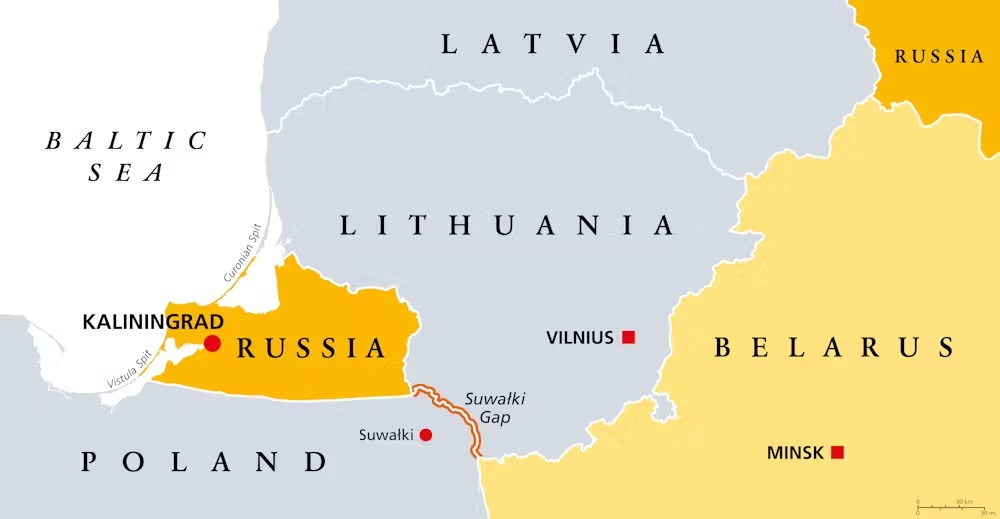
Making comparisons between Hitler and Putin is to make an assumption – that Putin had studied what Hitler did in trying to establish complete suzerainty over Europe – yet ultimately failed. Putin may think he has learnt from that failure in how to invade the former Soviet dependency, Ukraine, the assumption being that it’s an integral part of Russia, in line with the seeming acceptance by Belarus and its dictatorial President, Alexander Grigoryevich Lukashenko, of its status as a client Russian State.
European countries seek to gain consensus by endless talk-fests, which leads to one word – appeasement. The Soviet Union moved into the vacuum, which democracy seems to create in Eastern Europe after WWII.
The occupation of Crimea was Putin’s test of Western resolve, in many ways echoing Hitler’s occupation of the Saarland, the industrial portion of Germany ceded provisionally to France at the Treaty of Versailles. A plebiscite about its future was scheduled for fifteen years after the cession to France. Germany, with Goebbels in full flight and with its German population, overwhelmingly voted for its return to Germany. This was Hitler’s first test of European resolve.
The Putin playbook was to test the Allied resolve by invading Crimea in early 2014. Crimea was predominantly Russian and had been ceded to Ukraine in a fit of pique by Khruschev. To Putin it was a lay down misère to reclaim.
Obama for all his flowery rhetoric was an indecisive appeaser, a man who took the path of least resistance in economic and foreign policy. However, Ukraine elected a new leader out of the chaos and corruption of Ukraine politics egged on by Putin. Volodymyr Zelensky changed the whole dynamic.
Now Putin’s demand to end the War, unlike Hitler’s demands from a position of power, are nevertheless repeating some of the Nazi playbook. First, the West must accept the de facto partitioning of the Ukraine which has been gnawed away by the “Russian Rodent”, and now has a buffer zone which is better able to resist the superior Allied weaponry. Second his demand that the Russian funds held in Europe and the USA be released back to Russia. Here he depends on the accession of Trump, and third, neutralising any Ukrainian bid to join NATO. Partitioning is vital because if that demand was agreed, it would be anticipated by Putin that he could eventually take over the dismembered country as Hitler did to Czechoslovakia.
The Treaty of Versailles, by its redrawing of European borders, provided fuel for future conflict. One such was the Polish Corridor, where Poland was provided access to the Baltic Sea, this separating Germany from East Prussia, with an appendage Freeport called Danzig, of which I have written before, a curiosity in Eastern Europe where the British were supposed to be responsible for its external relationships. Having dismembered Czechoslovakia, Hitler turned his attention to the Polish Corridor. The Nazis seized Danzig in 1939, and the stage was set for the conflict with Poland, ostensibly to regain the Polish Corridor territory in order to unify Germany. Hitler took out insurance by entering into the Molotov-Ribbentrop treaty with Russia at the same time.
Thus, in early September 1939 when this threat to Poland turned into a full-blown German invasion, WWII was precipitated. Poland was quickly conquered, and the spoils were shared between Germany and Russia – an unholy alliance which came apart two years later. Ultimately Poland regained the territory at the end of WWII, albeit as a client Soviet satrap. Ironically Danzig, renamed Gdansk, was the base for the uprising led by Lech Walesa, which assisted in the destruction of Soviet hegemony over Eastern Europe in the late 1980’s. This hegemony is what Putin wishes to restore.
Land corridors are thus a source of instability, which brings me to the existence of the Suwalki Corridor. The Suwalki Corridor runs between Belarus and Kaliningrad, along the border between Poland and Lithuania. Kaliningrad, an exclave of Russia, provides a haven for the Russian Baltic fleet, also crammed full of military surveillance and cybersecurity equipment of which the Americans would be very well aware. Exclaves are basically unstable and linking it back to Russia via a surrogate Belarus provides an excuse for Putin to invade the Baltic countries.
Maybe the time has passed because of the unexpected resistance of Ukraine, which is draining Russian resources, even though Russia seems to be surviving by the sales of fossil fuels, to countries like India which play both sides of the street and China which is more circumspect but necessary for Putin’s illusion of restoring Imperial Russia – more Peter the Great than Stalin.
His hope is that the increasingly demented Trump is returned to the White House with an unknown number of traitors embedded in his MAGA outfit. America reverts to isolationism.
Then the Suwalki Corridor may emerge as the manufactured reason for an invasion of the Baltic countries and then Poland perhaps. Meanwhile, the Russian occupation of Georgia and Moldova will occur and Putin is on his way towards a Golden demented American sunset.
What is the Suwalki Corridor?
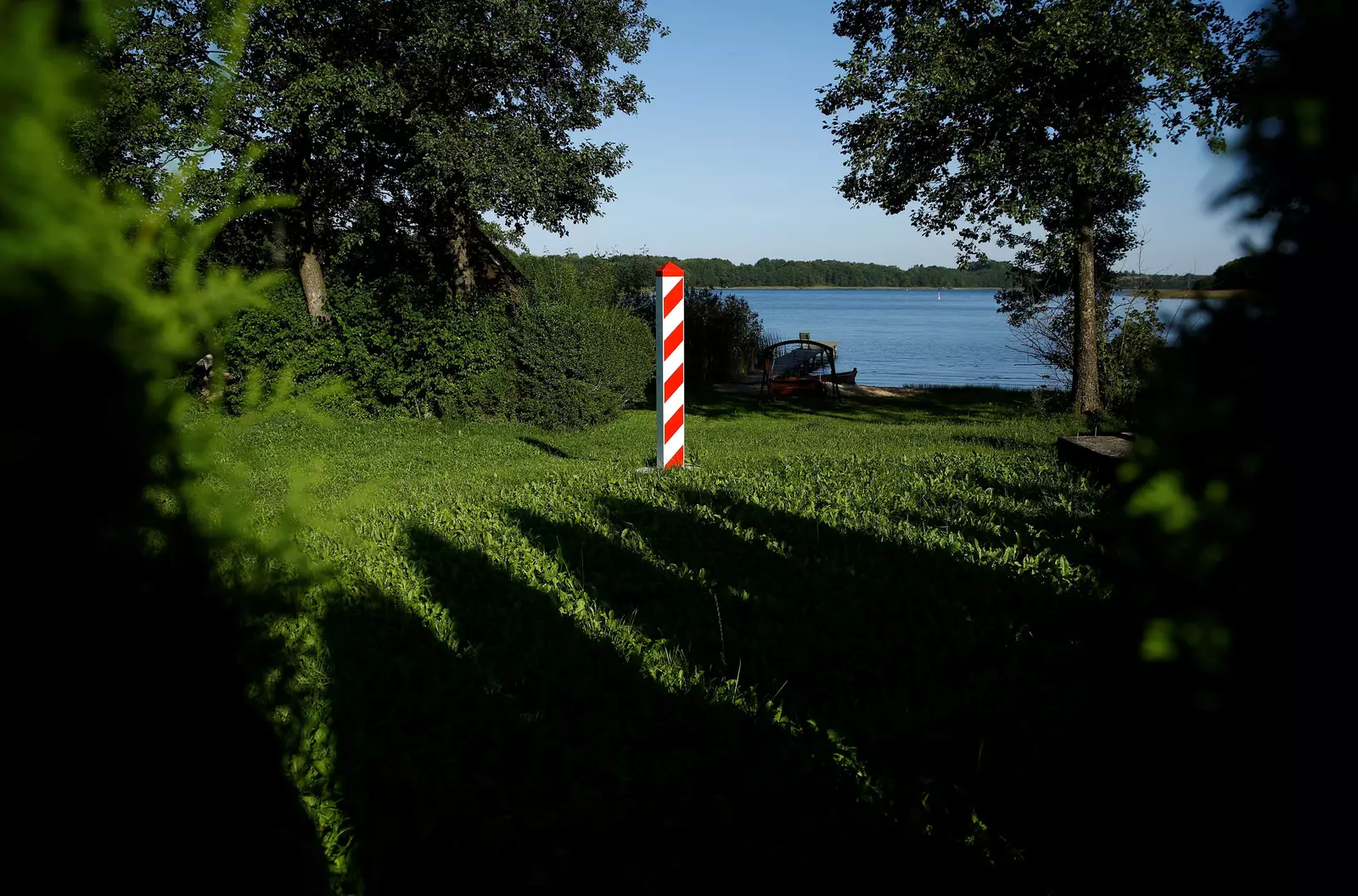
It is now more recently named The Suwalki Gap by the then US-educated Estonian President, Toomas Hendrik in a meeting with Ursula von de Leyen in 2015, the name change to Sulwalki Gap highlighted the vulnerability of that border area. Suwalki is a city in NE Poland, which once was thirty-four percent Jewish, and was at one point Lithuanian before being taken by Poland in the interwar period between WWI and WWII. Such is Baltic stability!
Persimmon
I had the perfect persimmon for lunch. Our introduction to the persimmon was inauspicious. Our hostess then, those years ago, had thought she would surprise us with a piece of exotica. But the persimmons were the type which unless they are completely ripe, are so astringent, that as I said at the time, it felt as though the floor of my mouth resembled being carpeted by Axminster.
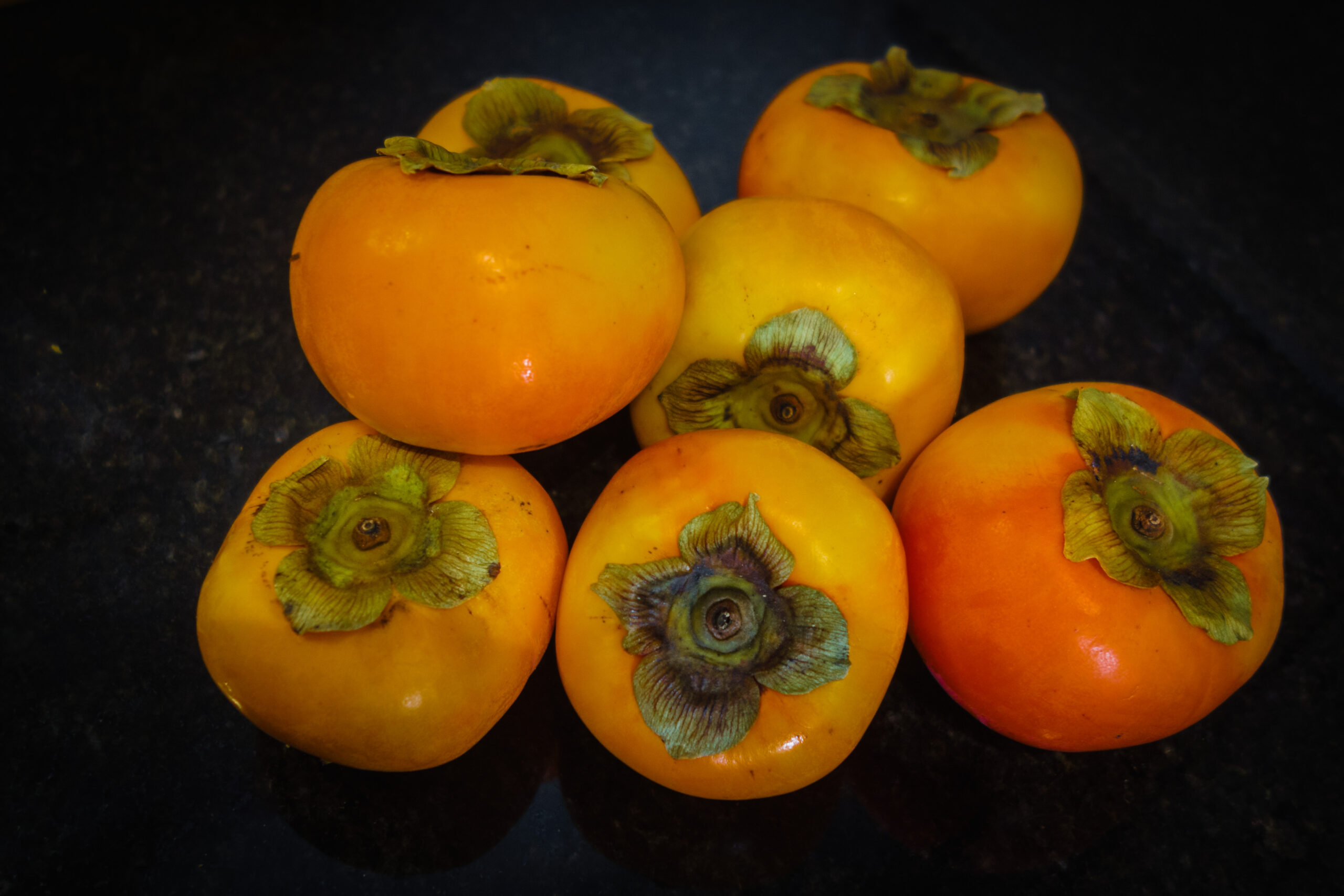 But not this time. Although persimmons have been bred to diminish the astringency element, this was one of the original type. And here I was presented with the fruit, the top sliced off. Then spoon in hand I delved into the interior. There was no resistance unlike some I’ve eaten, with the fascial pith stopping easy spooning and where the ripe skin comes away with the pulp.
But not this time. Although persimmons have been bred to diminish the astringency element, this was one of the original type. And here I was presented with the fruit, the top sliced off. Then spoon in hand I delved into the interior. There was no resistance unlike some I’ve eaten, with the fascial pith stopping easy spooning and where the ripe skin comes away with the pulp.
This did not happen here, and the consistency and colour reminded me of runny apricot jam. But it was exquisite. And the taste. Well, persimmon of course.
Once Upon a Time in Broome
It was November 1987. I wrote this up in one of my regular articles in the MJA in 1988 almost a year after a day spent in a hot stuffy courthouse, but on looking back I would never regret being an onlooker on that day. I am placing this in my blog, given the current problems, the Border Forces having been reported as having fires on their craft, which in any event seem not to be doing the job for which they were bought. This embarrassment has been coupled with the normal second-rate company supposed to be responsible for maintaining their seaworthiness which has meant a significant number of boats out of service at any one time. This draws attention to the tender process, with its “who-knows-who” selection process rather than any need for demonstrated competence.
It was a different time when Hawke was Prime Minister and most of his Ministers were people of quality not afraid of making decisions.
Thus, I have reproduced what I jotted down so long ago in Broome.
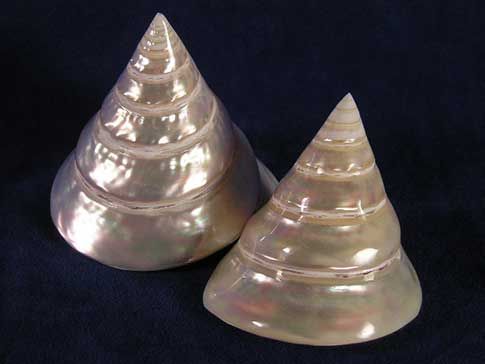 “I am spending a November Wednesday at Broome’s Court of Petty Sessions. I came here initially because the crew of an Indonesian fishing boat was arrested. Yesterday, when I saw the boat riding at anchor in the Port of Broome, it looked like one of those small inter-island ferries which ply their trade in the Southern Moluccas and around Sulawesi. There had been 23 persons on board this boat, which looked as though it could accommodate only half that number, and as it lurched in the swell it barely appeared seaworthy enough to cross Sydney Harbour, let alone the Timor Sea.
“I am spending a November Wednesday at Broome’s Court of Petty Sessions. I came here initially because the crew of an Indonesian fishing boat was arrested. Yesterday, when I saw the boat riding at anchor in the Port of Broome, it looked like one of those small inter-island ferries which ply their trade in the Southern Moluccas and around Sulawesi. There had been 23 persons on board this boat, which looked as though it could accommodate only half that number, and as it lurched in the swell it barely appeared seaworthy enough to cross Sydney Harbour, let alone the Timor Sea.
The fishing boat had been intercepted near Adele Island to the north by the patrol boat, HMAS Geraldton. The ostensible reason for the Indonesian expedition was to poach trochus shell from the reef around the island. The Geraldton was tied up at the dock when I arrived. The petty officer was friendly but said that he could not disclose the exact maximum speed of the ship – except to say that it was in excess of 30 knots. There was no doubt that the Geraldton was a high-class, sleek piece of machinery; with its guns mounted fore and aft it would not have been the most welcome sight for the Indonesian fishermen – if that was what they were.
In fact, aircraft had spotted three seacraft off a portion of the coast named Cape Leveque. The coastal waters were becoming busy with boats, presumably illegally in these waters, since the patrol boat intercepted two totally different boats from those that were spotted by the aircraft.
The complaint against the 25-year-old captain of the Indonesian boat is a charade. It is a necessary charade in terms of breaches of the Crimes Act, but one for which the slightly-built islander from south of Sulawesi – married with no money – has only to stand up when asked and otherwise be polite. A conviction is entered. If within five years he comes into Australian territorial waters, he will have to pay the $1500 fine that has been imposed. Importantly, he will be set free with his livelihood – his boat.
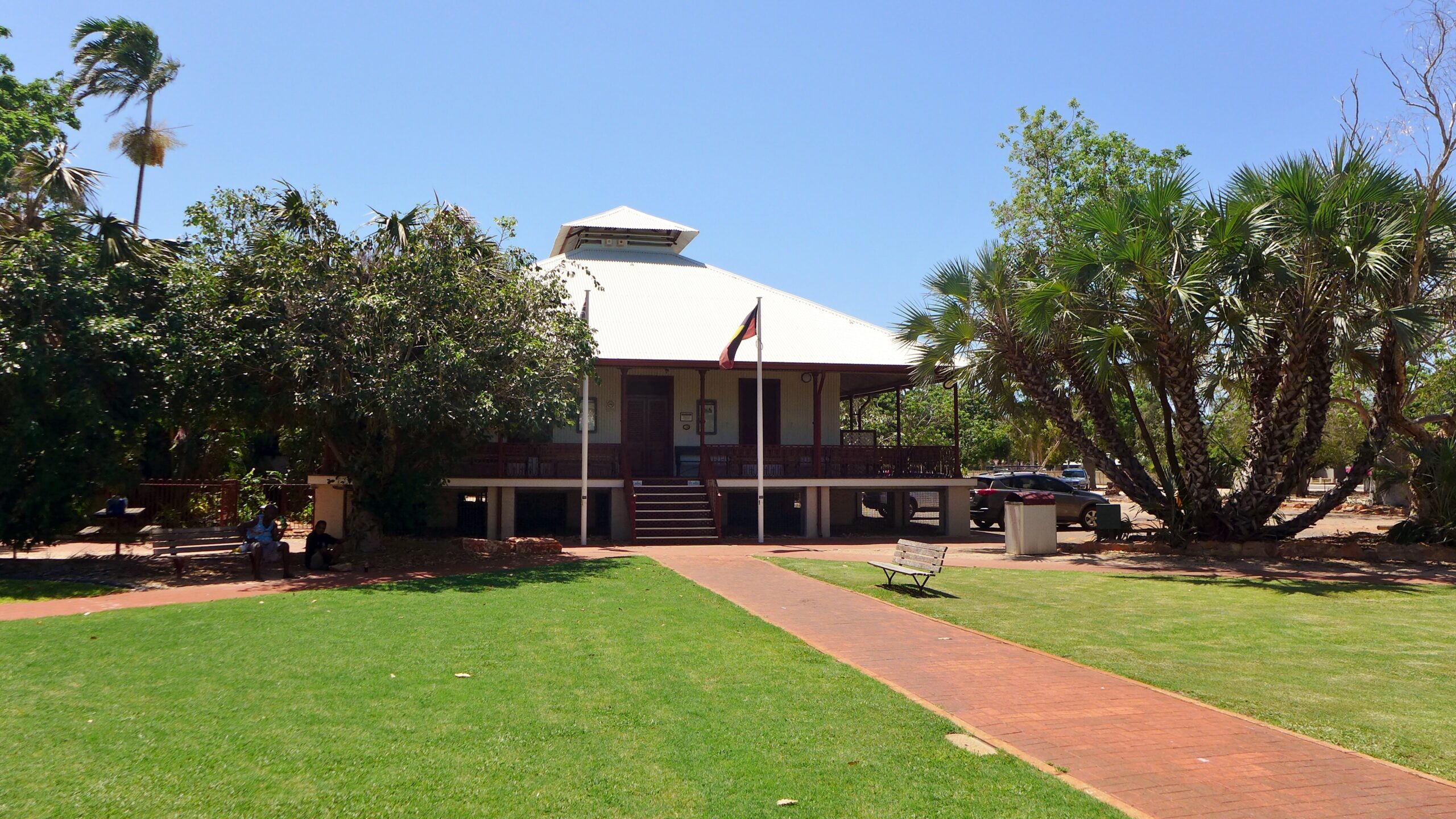
The magistrate refers to the breaches in quarantine – both animal and human – but as nobody had actually landed on Australian soil nor harvested trochus shell at the time of interception, the boat can neither be seized by the Australian Customs Service nor by the WA Fisheries Department. There were no illicit drugs on board, although the magistrate makes reference to the curious fact of the several suitcases full of new clothes and the relative paucity of fishing gear.
One of the Fisheries officers is most unconvinced by the trochus shell story, and he believes that there are many illegal immigrant routes into Australia from the Indonesian archipelago. In a “kerbside” conversation in a court room such conversations must remain hearsay. However, the magistrate accepts the trochus shell story. The captain will be released with his 22 compatriots – to be escorted out beyond the old 12-mile limit and sent on his way.
It is ironic on this day of Australian leniency and compassion that a Taiwanese fishing boat, under contract with a Perth company and apparently fishing legally under licence in Indonesian waters, limped into Darwin. The boat had been blasted by an Indonesian gunboat south of the Aru Islands, with the loss of life of three Taiwanese fishermen. An Indonesian diplomatic spokesman, when asked in Canberra what were the circumstances of the attack, accepted no blame.”
Sound familiar! Seems to have been imported to Canberra – a form of foot in mouth disease? Should we have had better biosecurity against this chronic infestation?
Mouse Whisper
You know we have a Ganesha in house. It about eight centimetres in height, made of bone, seemingly old, beautifully and intricately carved, bought in India over forty years ago. Never know about its age, some of the Indians have a tricky capacity to artificially age their gewgaws.
Not that Lord Ganesha is a trifle. Already, he is glaring at me.
As the Boss said, all households should have one. Lord Ganesha is meant to bring good luck.
As the story goes, Parvati, the Hindu mother goddess being the Divine who mediates wife-husband relationships formed Ganesha from the rubbings of her body so that he might stand guard at the door while she bathed. When Shiva approached, unaware this was his son, he was enraged at being kept away from his wife and proceeded to lop off Ganesha’s head.
To ease Parvati’s grief, Shiva promised to cut off the head of the first living thing he saw and attach it to the body. That creature was an elephant. Ganesha was thus restored to life and rewarded for his courage by being made Lord of new beginnings and guardian of entrances. Praying to Lord Ganesha is invariably accompanied by smashing a coconut, symbolic of smashing the undesirable forces inherent in oneself.
Mice, it is said, destroy a lot of foodgrains. Lord Ganesha as the remover of obstacles to obtaining prosperity, has the duty to go after the destroyers, all rodents. The mouse being a small animal can get into all sorts of corners using its smartness and thus Lord Ganesha rides the mouse to illustrate his dominance over us.
I take a wide berth around that darkened bone smiling figure.
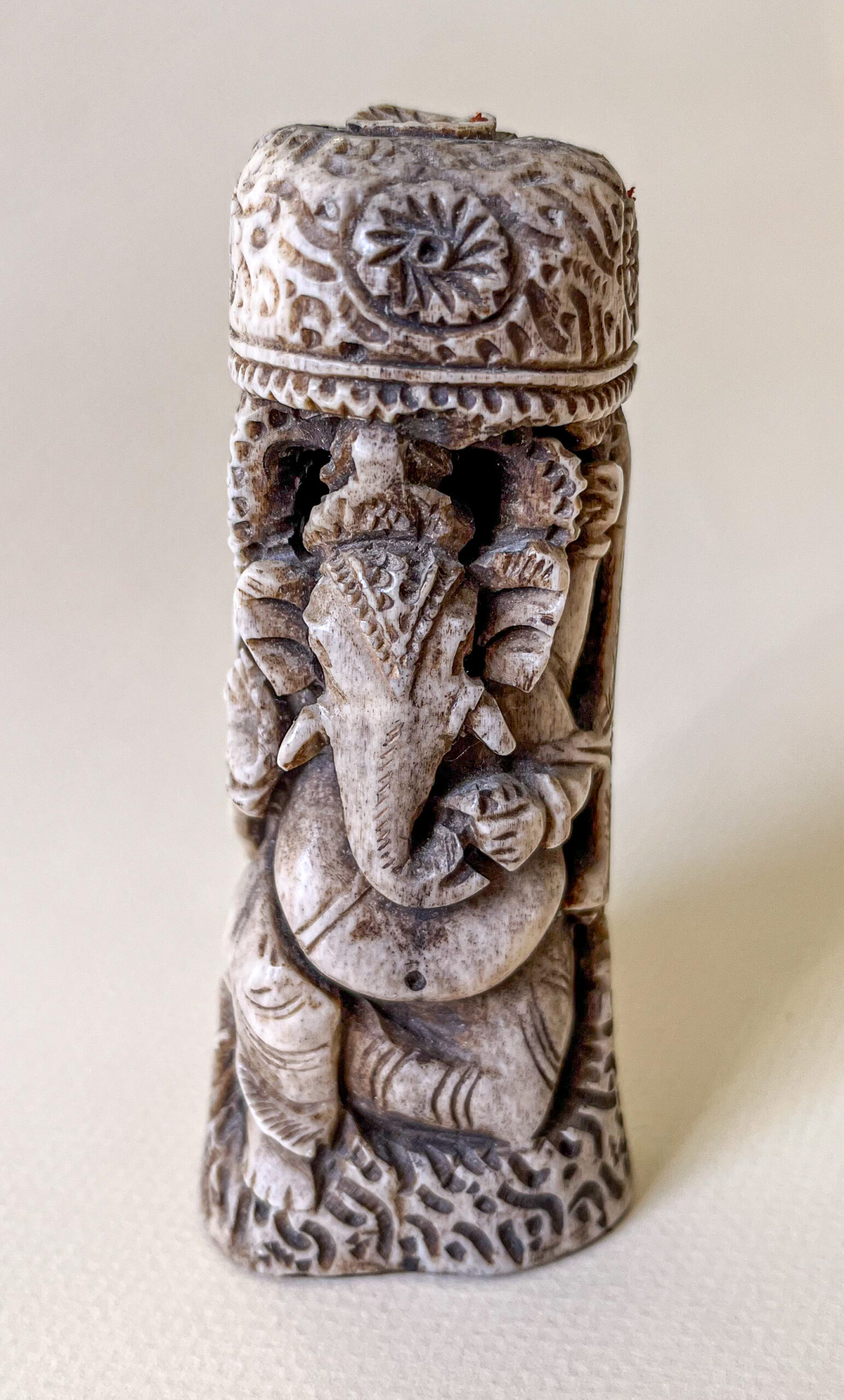

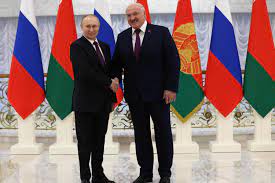
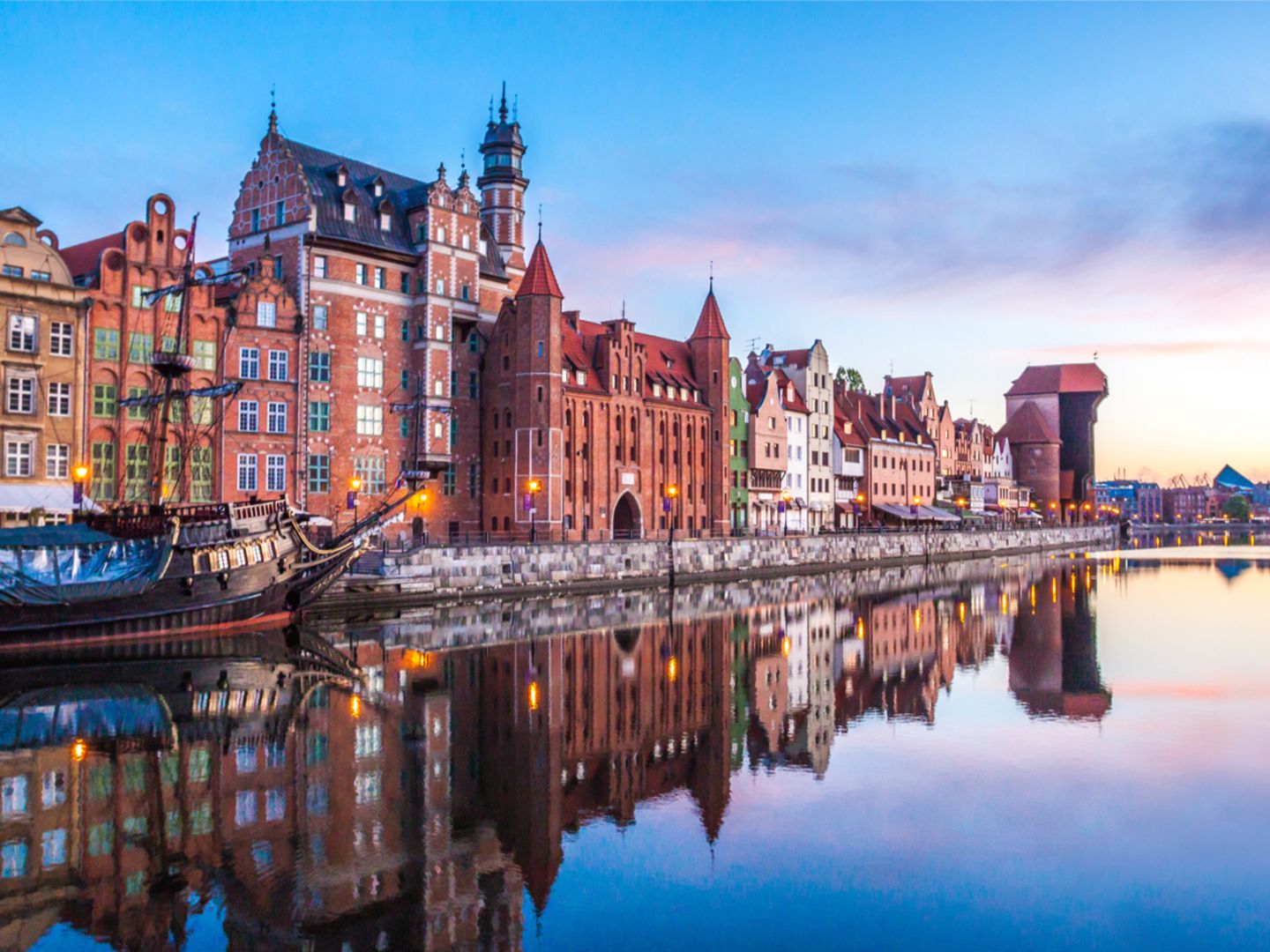
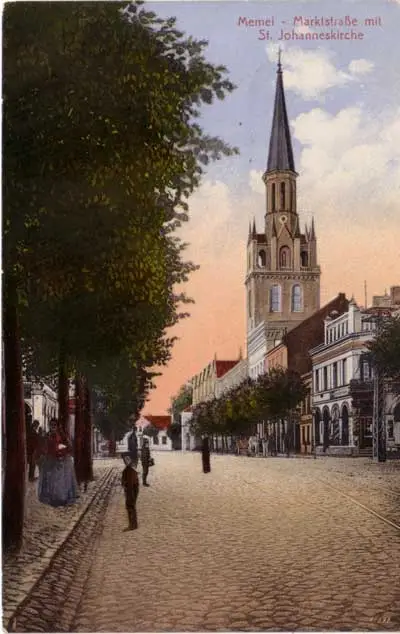
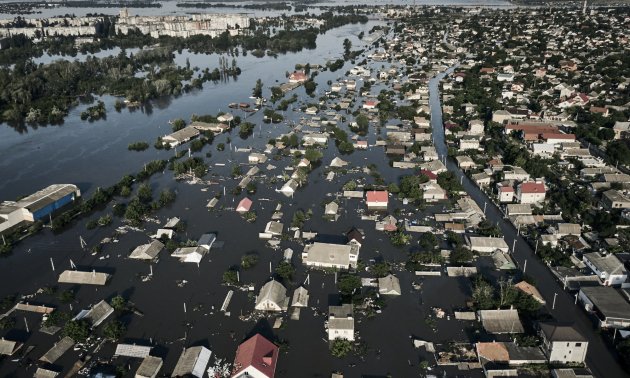
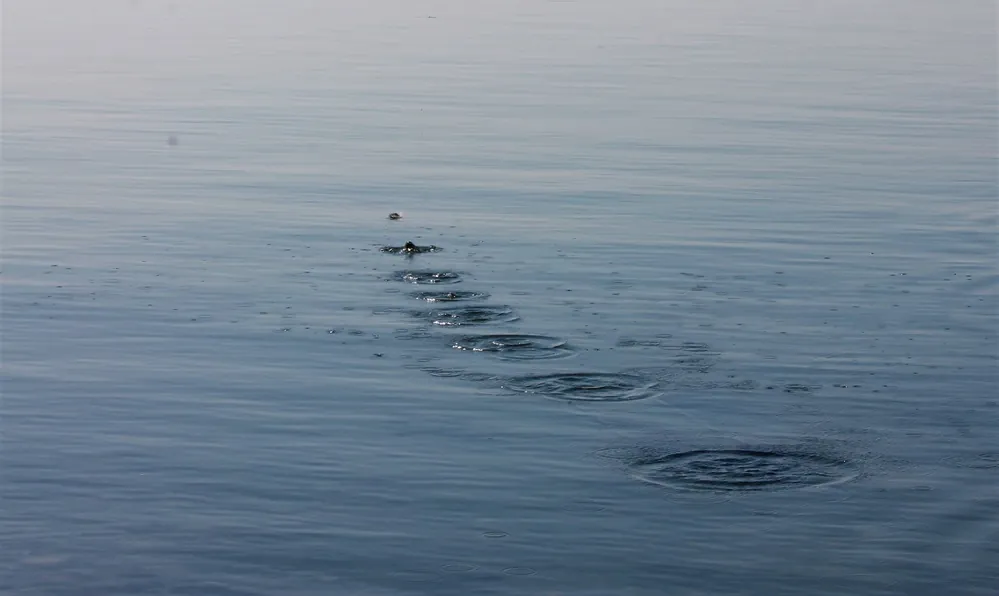
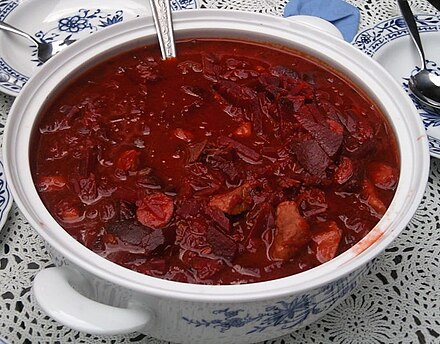 I was reminded of the first by this long article in The Guardian about borscht. I advisedly spell it the Yiddish way because it was presented to us one Friday night at Shabbat. As I understand it, heating the food for Shabbat is not done, so when we sat down we were presented with this blood red beetroot cold soup. For those of us not used to such soup, including myself, I felt as I sipped it, my stomach immediately rejecting it and that going down was met by that coming up. I was not alone. There is no etiquette for vomiting at the dinner table, especially when presented with a signature dish. There was a certain embarrassment, but the gefilte fish attracted more positive comments. I must say that I have eaten borscht since, but always warm – not that I have a phobia about cold soup. Iced gazpacho on a hot day is a magnificent culinary antidote on such a day.
I was reminded of the first by this long article in The Guardian about borscht. I advisedly spell it the Yiddish way because it was presented to us one Friday night at Shabbat. As I understand it, heating the food for Shabbat is not done, so when we sat down we were presented with this blood red beetroot cold soup. For those of us not used to such soup, including myself, I felt as I sipped it, my stomach immediately rejecting it and that going down was met by that coming up. I was not alone. There is no etiquette for vomiting at the dinner table, especially when presented with a signature dish. There was a certain embarrassment, but the gefilte fish attracted more positive comments. I must say that I have eaten borscht since, but always warm – not that I have a phobia about cold soup. Iced gazpacho on a hot day is a magnificent culinary antidote on such a day.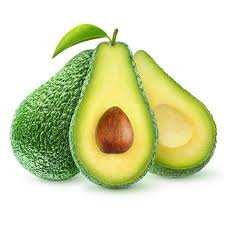 The second disastrous introduction was to the avocado. One night, we had been invited to a dinner party. It was sometime in the early 1960s. The hostess produced this unfamiliar green fruit, which vaguely resembled a pebbled-skin pear. However, nobody had told her that they had to be ripe to eat. Hence, we struggled with the yellowish flesh surrounding the central seed. Unripe avocado flesh, as we found out, was like concrete, and after hacking pieces of this flesh, it proved completely inedible. Nobody had thought to read anything about the fact that avocados had to ripen – and as we were already well lubricated, the avocados were swiftly destined for the rubbish bin.
The second disastrous introduction was to the avocado. One night, we had been invited to a dinner party. It was sometime in the early 1960s. The hostess produced this unfamiliar green fruit, which vaguely resembled a pebbled-skin pear. However, nobody had told her that they had to be ripe to eat. Hence, we struggled with the yellowish flesh surrounding the central seed. Unripe avocado flesh, as we found out, was like concrete, and after hacking pieces of this flesh, it proved completely inedible. Nobody had thought to read anything about the fact that avocados had to ripen – and as we were already well lubricated, the avocados were swiftly destined for the rubbish bin.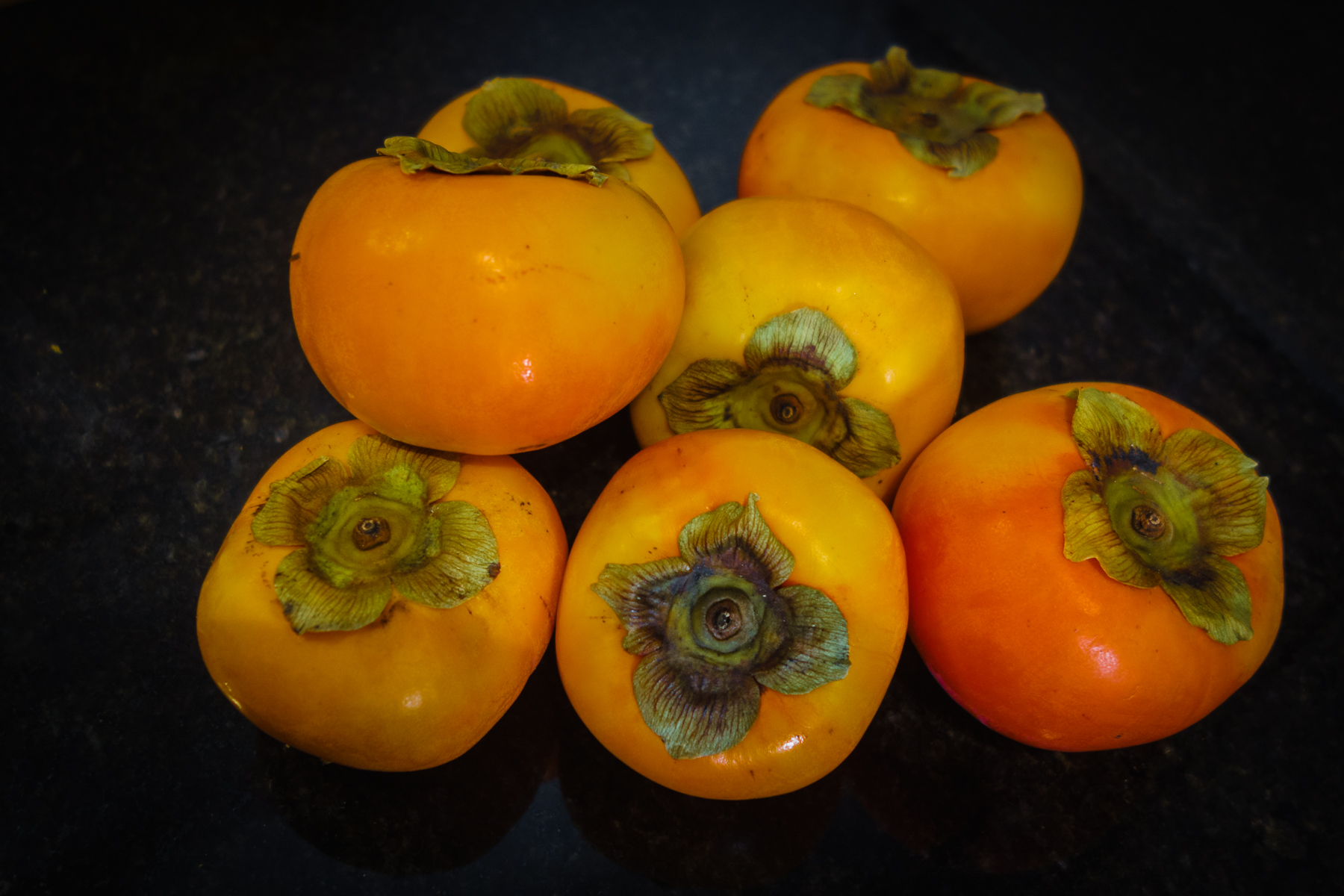 The third disastrous introduction was to the persimmon. There are two varieties of persimmon – those that are astringent when not perfectly ripe and those which are not. This time the particular hostess proudly presented us with persimmons as a treat at the end of the meal. Unfortunately, they were the astringent types, and I referred to my mouth after eating a sliver as being like having an Axminster carpet lining my mouth, so great was the astringency.
The third disastrous introduction was to the persimmon. There are two varieties of persimmon – those that are astringent when not perfectly ripe and those which are not. This time the particular hostess proudly presented us with persimmons as a treat at the end of the meal. Unfortunately, they were the astringent types, and I referred to my mouth after eating a sliver as being like having an Axminster carpet lining my mouth, so great was the astringency.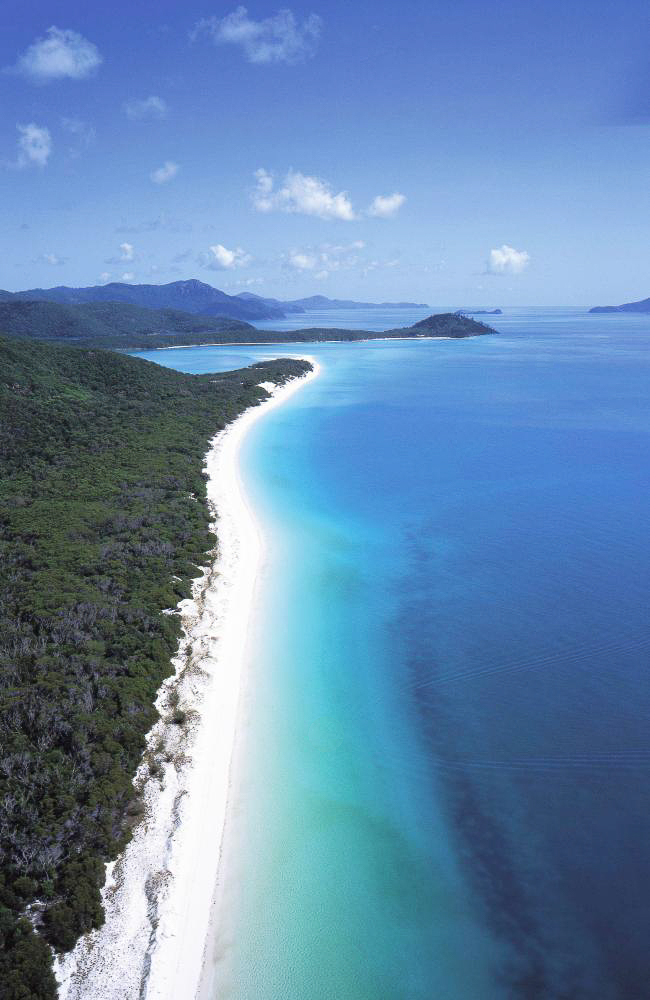
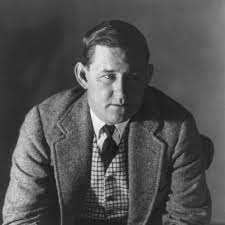
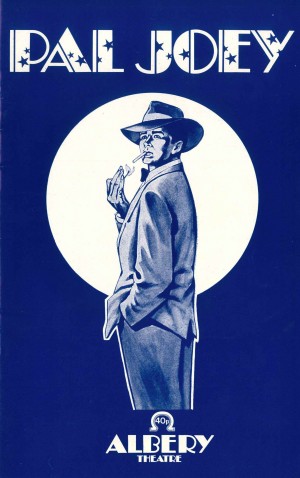
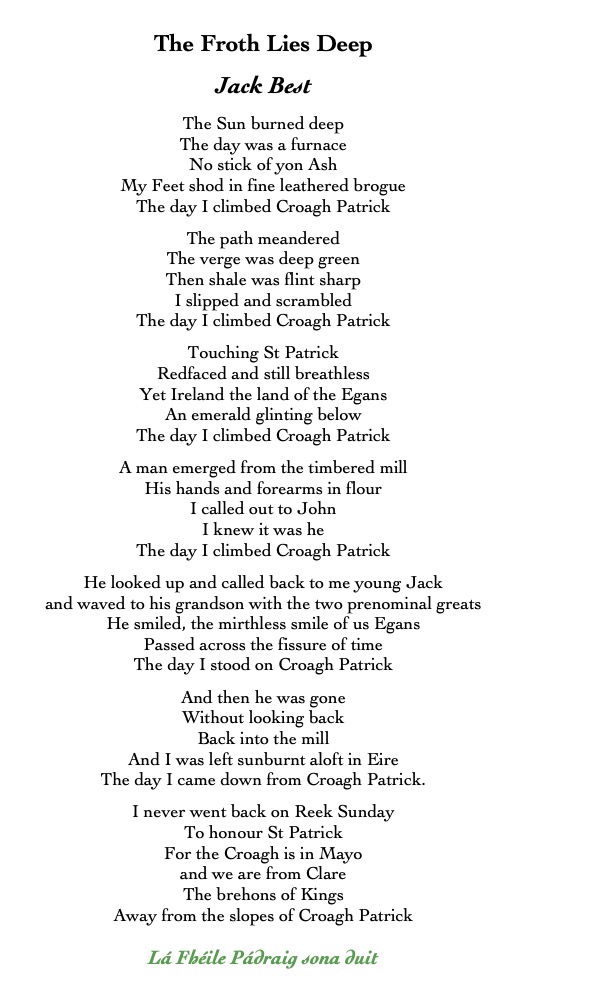
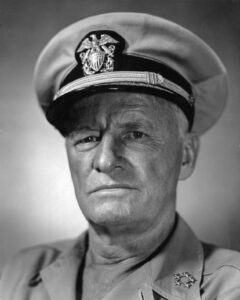
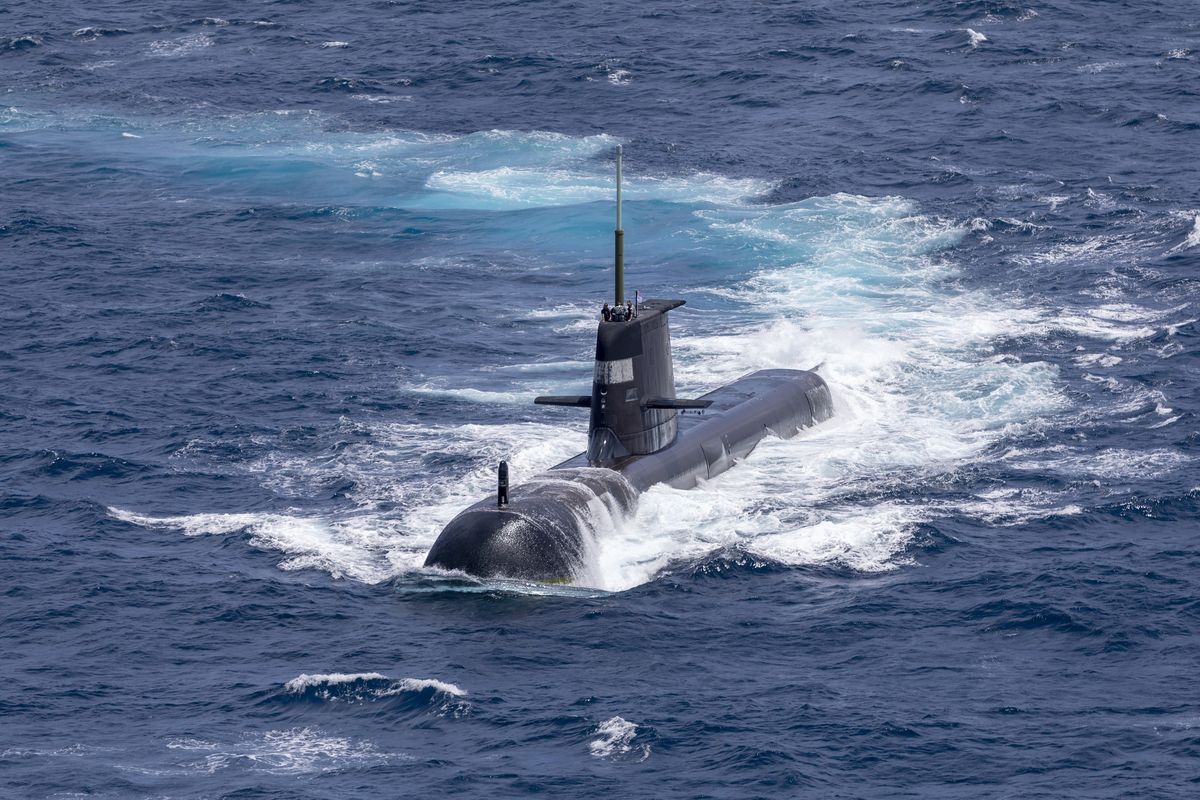
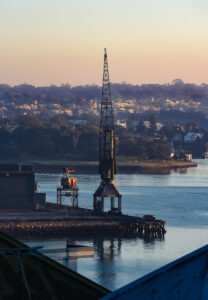
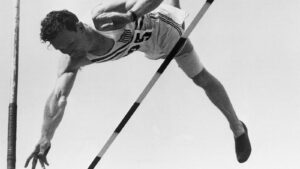
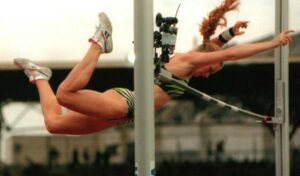
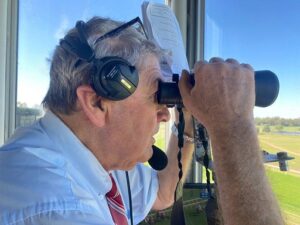
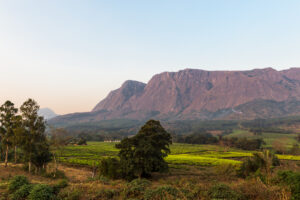
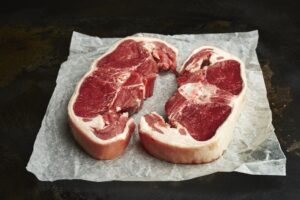
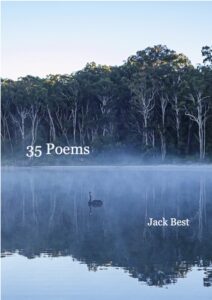
 Graham Arnold, the current Australian coach is a knock-about Australian, who fits within the description of a typical “Aussie bloke”. His zone? An abusive father; mother who dies of cancer when he’s 20; lives in straitened circumstances as a teenager, soccer journeyman who has pushed his innate abilities to its limits; underestimated; a chip on his shoulder compounded by his rumpled appearance. Moreover, he drinks at the Sackville Hotel in Rozelle (renamed for the Cup Sacky-roos), which I know well also. Rozelle – now gentrified – a long way from his childhood yet with identifiable parts to which he could relate, like his Sackville patron mates.
Graham Arnold, the current Australian coach is a knock-about Australian, who fits within the description of a typical “Aussie bloke”. His zone? An abusive father; mother who dies of cancer when he’s 20; lives in straitened circumstances as a teenager, soccer journeyman who has pushed his innate abilities to its limits; underestimated; a chip on his shoulder compounded by his rumpled appearance. Moreover, he drinks at the Sackville Hotel in Rozelle (renamed for the Cup Sacky-roos), which I know well also. Rozelle – now gentrified – a long way from his childhood yet with identifiable parts to which he could relate, like his Sackville patron mates.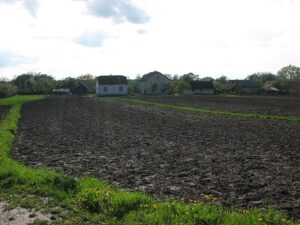

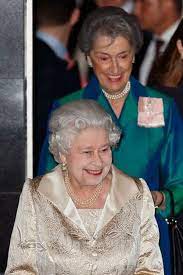


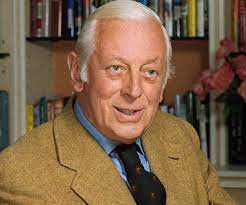
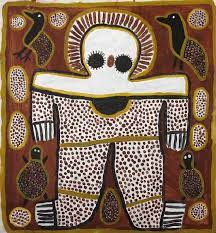 I managed to find one small bark Wandjina for sale in Kununurra, which I gave to my elder son. Since then, my wife and I have acquired several Wandjina painted by the Karedada sisters – Lily and Rosie (the Karedadas were the family with the responsibility at that time for painting Wandjina); a small bark painting by Waigan and one where the provenance was unknown as it was created in the mid-1960s when such bark representations of the Wandjina were new. Most of these bark images came from the Aboriginal people living at Kalumburu, a settlement on Mission Bay about 230 kilometres north of the Gibb River Road turnoff in Western Australia. Here the Spanish Benedictines had established a mission in the early part of the twentieth century. One of my teachers had said that during WWII, when he was in the Australian navy, he had been stranded there. The priests only spoke Spanish and he not; therefore, they communicated in Latin. No mention in any of his anecdotes of contact with the Indigenous people; such were the times.
I managed to find one small bark Wandjina for sale in Kununurra, which I gave to my elder son. Since then, my wife and I have acquired several Wandjina painted by the Karedada sisters – Lily and Rosie (the Karedadas were the family with the responsibility at that time for painting Wandjina); a small bark painting by Waigan and one where the provenance was unknown as it was created in the mid-1960s when such bark representations of the Wandjina were new. Most of these bark images came from the Aboriginal people living at Kalumburu, a settlement on Mission Bay about 230 kilometres north of the Gibb River Road turnoff in Western Australia. Here the Spanish Benedictines had established a mission in the early part of the twentieth century. One of my teachers had said that during WWII, when he was in the Australian navy, he had been stranded there. The priests only spoke Spanish and he not; therefore, they communicated in Latin. No mention in any of his anecdotes of contact with the Indigenous people; such were the times.
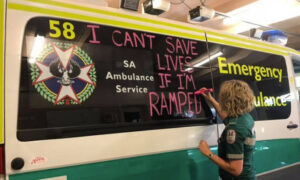
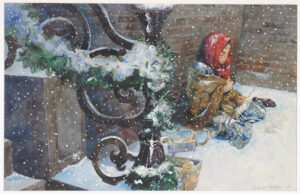
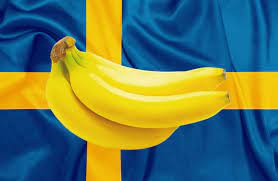
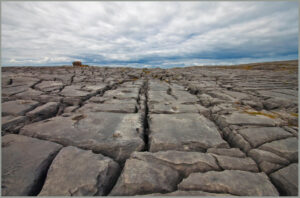
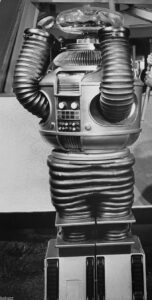 Albanese, you addressed them, but see how the Murdoch Press tried to mangle you? As the Robot’s catchcry in Lost in Space goes: “Warning, warning, warning!” Rather apt, I would think – on many fronts!
Albanese, you addressed them, but see how the Murdoch Press tried to mangle you? As the Robot’s catchcry in Lost in Space goes: “Warning, warning, warning!” Rather apt, I would think – on many fronts!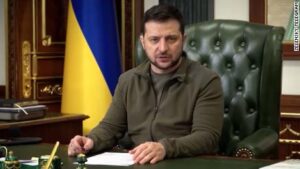

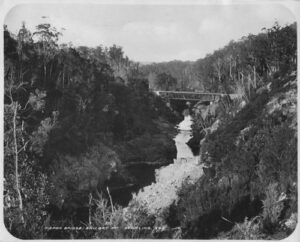
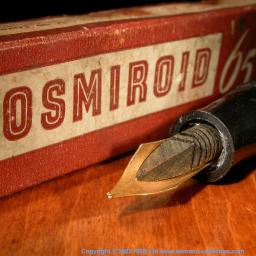
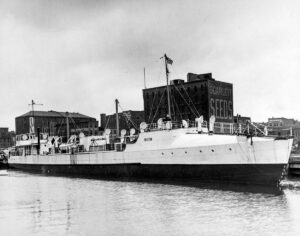
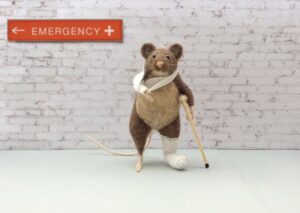
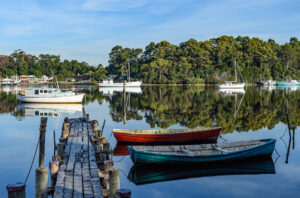
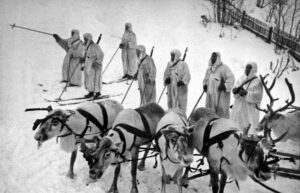
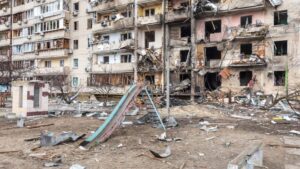
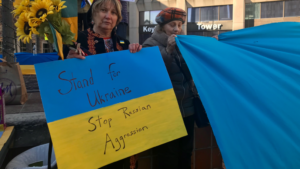
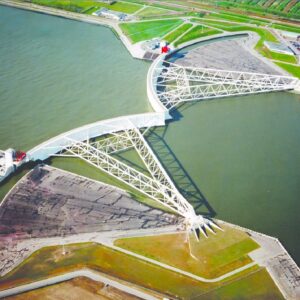
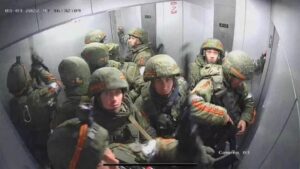
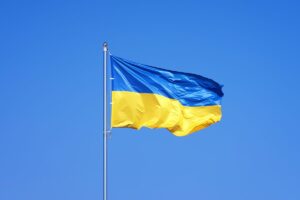
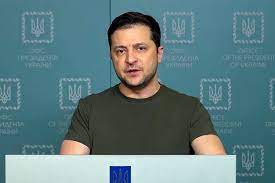
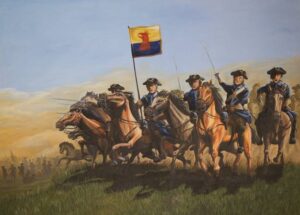
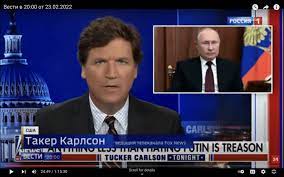




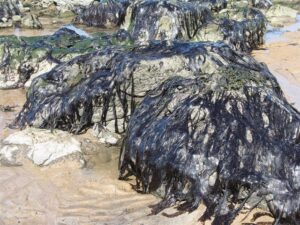
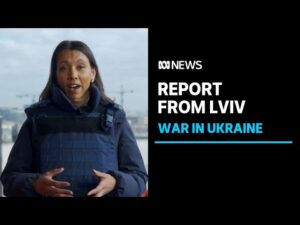 Below Isabella Higgins was reflecting on where she came from in a piece written three years ago. Now she is the ABC face in the Western Ukraine.
Below Isabella Higgins was reflecting on where she came from in a piece written three years ago. Now she is the ABC face in the Western Ukraine.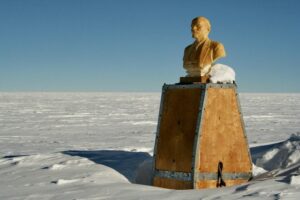
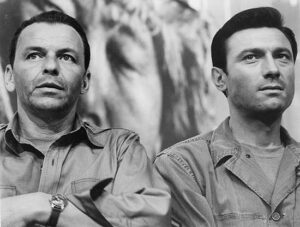

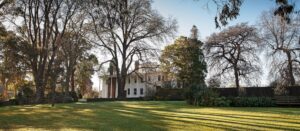
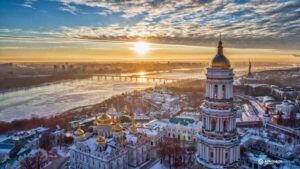

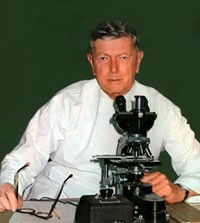
 Australia has yet to reap the full legacy of “Long COVID”; but let me reiterate, as a legatee of a chronic disease with a recent relapse, I would not wish it on anybody. I cannot be vaccinated against my disease, and thus will never have freedom from it – think about it if you are one of those unvaccinated COVID-19 idiots wrapped in your yellow rags, while you rail against vaccination. You at least can gain protection from the disease. For the unfortunate it may become chronic, when sometimes you may wish for the freedom of dying as preferable. You can be assured that will be “forever”.
Australia has yet to reap the full legacy of “Long COVID”; but let me reiterate, as a legatee of a chronic disease with a recent relapse, I would not wish it on anybody. I cannot be vaccinated against my disease, and thus will never have freedom from it – think about it if you are one of those unvaccinated COVID-19 idiots wrapped in your yellow rags, while you rail against vaccination. You at least can gain protection from the disease. For the unfortunate it may become chronic, when sometimes you may wish for the freedom of dying as preferable. You can be assured that will be “forever”.
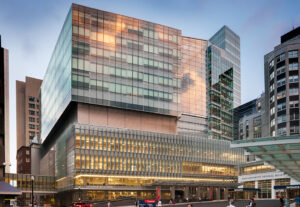
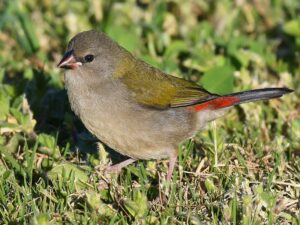
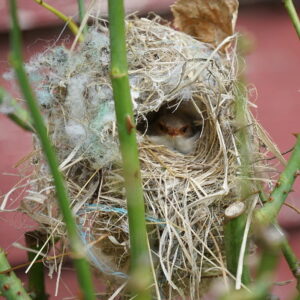
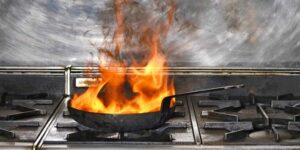
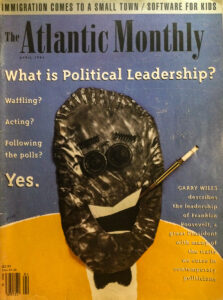 In 1994, I bought the April edition of the Atlantic Monthly because it had an article entitled “What is Political Leadership?” The author was Garry Wills, a conservative Catholic historian, with whom I had become acquainted through reading his book reviews in the New York Review of Books. Increasingly he has taken positions in relation to civil rights and then Vietnam which, in conventional terms, would seem to belie his conservative Catholic stance, especially given William Buckley was an early mentor. However, to be socially progressive is not incompatible with conservatism.
In 1994, I bought the April edition of the Atlantic Monthly because it had an article entitled “What is Political Leadership?” The author was Garry Wills, a conservative Catholic historian, with whom I had become acquainted through reading his book reviews in the New York Review of Books. Increasingly he has taken positions in relation to civil rights and then Vietnam which, in conventional terms, would seem to belie his conservative Catholic stance, especially given William Buckley was an early mentor. However, to be socially progressive is not incompatible with conservatism.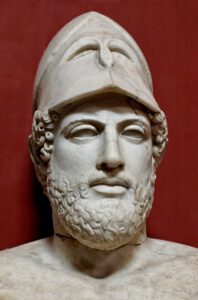
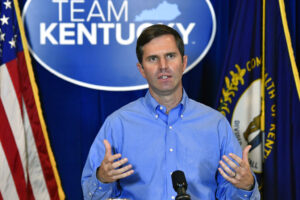
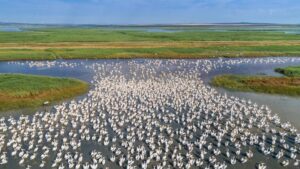
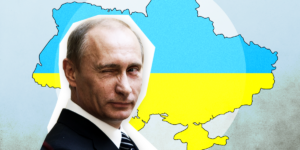 Thus, the assumption is that the Russian-speaking areas of Ukraine would be attracted to Putin. In Ukraine these speakers constitute 30 per cent of the population and, as would be expected, the area where Russian is least spoken lies along the western border area, with its history of Hapsburg rule. Nevertheless, the linguistic division is not sharp, and often Ukrainians use both Russian and Ukrainian in conversation, even within the one sentence. In contrast there has been a marked change in national sentiment with the pro-Soviet President, Viktor Yanukovych and his cronies being ousted in 2014.
Thus, the assumption is that the Russian-speaking areas of Ukraine would be attracted to Putin. In Ukraine these speakers constitute 30 per cent of the population and, as would be expected, the area where Russian is least spoken lies along the western border area, with its history of Hapsburg rule. Nevertheless, the linguistic division is not sharp, and often Ukrainians use both Russian and Ukrainian in conversation, even within the one sentence. In contrast there has been a marked change in national sentiment with the pro-Soviet President, Viktor Yanukovych and his cronies being ousted in 2014.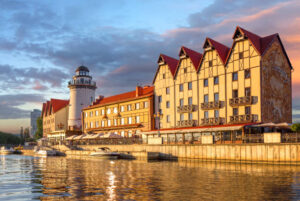
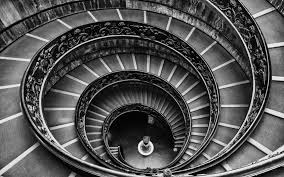 I wonder how many elderly or disabled people who fall require assistance to get off the ground or floor. Over two hours of smelling the carpet is not the best fragrance. The NSW Ambulance service averages about 25 minutes for an inner suburban urgent call. But not mine; the ambulance was based in Paddington (7.8 kilometres or 14 minutes) from my home.
I wonder how many elderly or disabled people who fall require assistance to get off the ground or floor. Over two hours of smelling the carpet is not the best fragrance. The NSW Ambulance service averages about 25 minutes for an inner suburban urgent call. But not mine; the ambulance was based in Paddington (7.8 kilometres or 14 minutes) from my home. Cathedral restorers hope to collaborate with the Louvre for the restoration of “the Mays,” 76 large paintings of the Acts of the Apostles donated between 1630 and 1707 by Parisian goldsmiths. Today, some are randomly placed in the side chapels and others are in museums. The plan would return them to the nave, so that visitors would see the witness of the apostles lining the main axis of the church.
Cathedral restorers hope to collaborate with the Louvre for the restoration of “the Mays,” 76 large paintings of the Acts of the Apostles donated between 1630 and 1707 by Parisian goldsmiths. Today, some are randomly placed in the side chapels and others are in museums. The plan would return them to the nave, so that visitors would see the witness of the apostles lining the main axis of the church.